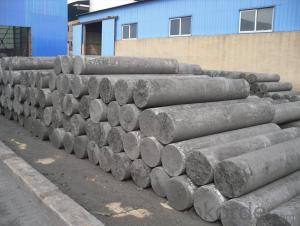Electric arc furnaces, or EAFs, are the unsung heroes of the steel industry. They’re the workhorses that turn scrap metal into something new, something useful, and something beautiful. But without the right tools, they’d be lost. And that’s where graphite electrodes come in. These little guys are the heart and soul of the EAF, the spark that keeps the fire burning, the lifeblood of the process.
Let’s talk about the relationship between EAFs and graphite electrodes. It’s like a love story, really. The EAF needs the graphite electrode to function, and the graphite electrode needs the EAF to shine. It’s a match made in industrial heaven.
Graphite electrodes are made from a special kind of carbon that’s been cooked up to be super strong and super conductive. They’re the perfect partner for the EAF because they can handle the heat and the pressure. And when they’re plunged into the furnace, they create an electric arc that’s hotter than the surface of the sun. That’s no exaggeration, by the way. It’s a fact.
Now, you might be wondering why we need such intense heat. Well, it’s all about melting the scrap metal. The EAF is like a giant microwave, but instead of cooking food, it’s melting steel. And the graphite electrodes are like the microwave’s magnetron, providing the energy that makes it all happen.
But here’s the thing: graphite electrodes don’t last forever. They’re consumed in the process, slowly eroding away as they do their job. It’s a beautiful sacrifice, really. They give their all to make something new, and in the end, they’re gone. But don’t worry, they’re not gone for good. The used electrodes can be recycled and turned into new ones, so they can live on and continue their noble work.
The production of graphite electrodes is an art in itself. It’s a delicate balance of science and craftsmanship. The raw materials are carefully selected and mixed, then they’re baked at high temperatures to create the final product. It’s like baking a cake, but instead of flour and sugar, you’ve got petroleum coke and coal tar pitch. And instead of a cake, you get a graphite electrode that’s strong, durable, and ready to take on the world.
Now, let’s talk about the different types of graphite electrodes. There are three main kinds: standard, high power, and ultra-high power. Each one has its own unique properties and is suited to different applications. It’s like having different flavors of ice cream, but instead of chocolate, vanilla, and strawberry, you’ve got different levels of performance and efficiency.
Standard electrodes are the workhorses of the bunch. They’re reliable and get the job done, but they’re not the most efficient. High power electrodes, on the other hand, are like the athletes of the graphite world. They’re faster, stronger, and more efficient, but they come at a higher cost. And then there’s the ultra-high power electrodes, the elite of the elite. They’re the Ferraris of the graphite electrode world, offering the highest performance and efficiency, but they’re also the most expensive.
But why do we need different types of graphite electrodes? It all comes down to the specific needs of the EAF and the steel being produced. Some steels require more power and efficiency, while others can get by with the basics. It’s like choosing the right tool for the job. You wouldn’t use a sledgehammer to fix a leaky faucet, would you?
The use of graphite electrodes in EAFs has been a game-changer for the steel industry. They’ve allowed for more efficient and cleaner production of steel, reducing the environmental impact and making it more sustainable. It’s like finding a way to make a delicious meal with less oil and fewer calories. Who wouldn’t want that?
But there are challenges too. The demand for graphite electrodes is constantly growing, and the supply can sometimes struggle to keep up. It’s like trying to keep a popular restaurant stocked with ingredients when everyone’s craving the same dish. And then there’s the issue of quality. Not all graphite electrodes are created equal, and finding the right one for the job can be a challenge.
In conclusion, the relationship between electric arc furnaces and graphite electrodes is a vital one. They’re like two peas in a pod, or better yet, like Romeo and Juliet, if Romeo was a furnace and Juliet was a graphite electrode. They complete each other, they rely on each other, and together, they create something magical. So, the next time you see a steel beam or a shiny new car, remember the unsung heroes behind the scenes – the EAFs and the graphite electrodes that made it all possible.

